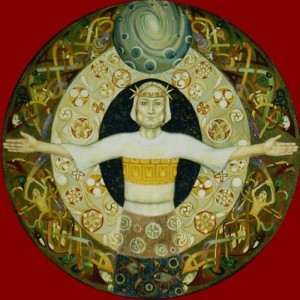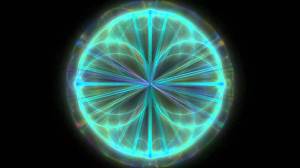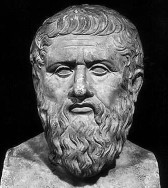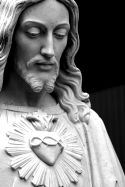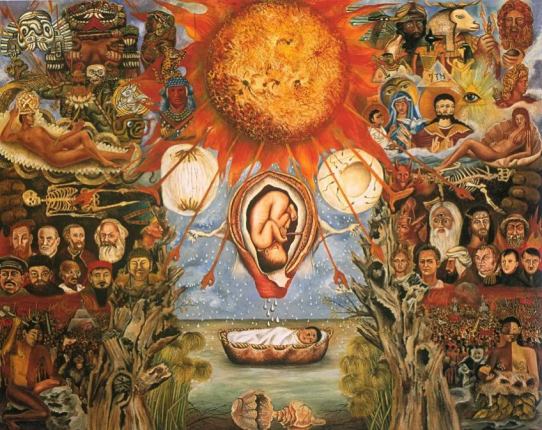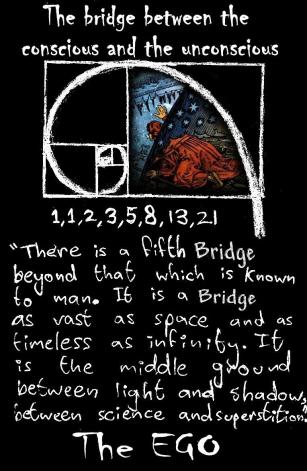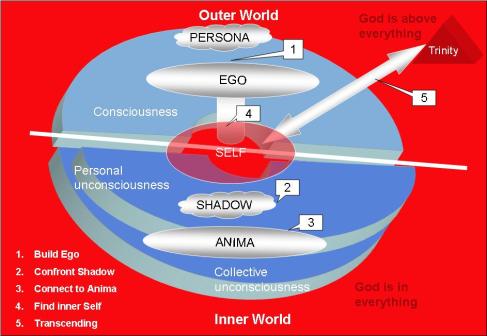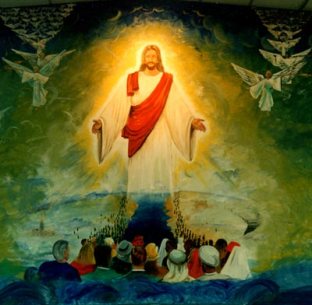Going back to Eddington’s statement in which he says “our particle can never have simultaneously a perfectly definite position and a perfectly definite energy…. Hence in delicate experiments we must not under any circumstances expect to find particles behaving exactly as a classical particle was supposed to…”, Preston Harold interprets this as it pertains to the ministry of Jesus:
Thus, Jesus, who in a delicate experiment made Himself a symbol of the “classical particle of God,” could not in truth behave as Messiah was supposed to, and He could not produce the “ideal classical particle,” God the Father, any more than the physicist can produce today the ideal iota of matter.
Harold goes on to explain how this ideal classical particle exists within humankind:
Men see in other men only their personalities – a wave group acting like a particle, a ego-group acting like a man; but just as searching the wave-group does not lead to the ideal classical particle, so searching the ego-group does not lead to the God-cell within man. This cell is “our Father” to the ego-group, is “my Father” to the Authority-Ego, h, and all of it that man may see is the form that surrounds it – the form of man, a being conscious of God within himself, as Son, one. In the divided conscious domain where super-, pre-, and subconsciousness operate, the ego-group may be likened to a cloud of electrons…
Eddington, again from his “The Nature of the Physical World,” describes to us the behavior of a cloud of electrons:
An electron decides how large it ought to be by measuring itself against the radius of the world in its space-directions. It cannot decide how long it ought to exist because there is no real radius of the world in its time-direction. Therefore it just goes on existing indefinitely…
We see the atoms with their girdles of circulating electrons darting hither and tither, colliding and rebounding. Free electrons torn from the girdles hurry away a hundred times faster, curving sharply round the atoms with side slips and hairbreadth escapes. The truants are caught and attached to the girdles and the escaping energy shakes the aether into vibration. X-rays impinge on the atoms and toss the electrons into higher orbits. We see these electrons falling back again, sometimes by steps, sometimes with a rush, caught in a cul-de-sac of mestastability, hesitating before “forbidden passages.”
Behind it all the quantum h regulates each change with mathematical precision….The spectacle is so fascinating that we have perhaps forgotten that there was a time when we wanted to be told what an electron is. The question was never answered. No familiar conceptions can be woven around the electron; it belongs to the waiting list. Similarly the description of the processes must be taken with a grain of salt…
Something unknown is doing we don’t know what – that is what our theory amounts to.
There it is! “Something unknown is doing we don’t know what!” Materialistic science hates to admit this. If they were to admit it, it would be tantamount to pulling the curtain back on themselves and exposing the materialistic-reductionist illusion which they use and manipulate to maintain their power, prestige, and to keep the money flowing. Why don’t we all try heed Eddington’s suggestion, which he applies to his own descriptions, and apply them to all scientific enquiry; let’s take it all with a grain of salt. This is not denying science, this IS WHAT SCIENCE IS SUPPOSED TO BE DOING IN THE FIRST PLACE. Certainly every scientific discovery made within the materialistic-reductionistic paradigm needs a few grains added to it’s recipe.
Preston Harold follows on Eddington’s electronic cloud descriptions:
In parallel, man’s ego-group bespeaks an unknown process – something unknown is “doing we don’t know what” – and one might say that, like an electron, a self-concept or an image of another which makes up the ego-group goes on existing indefinitely, but is relegated to the subconscious, or is repressed into the unconscious, not showing itself until some stimulus from the outside world calls it from latency. In man, the “something unknown” that, with mathematical precision, is doing “we don’t know what” can be only the Authority-Ego working to bring forth a genuine, classical elect-one: a personality in accord with one.
We will continue this train of thought in our next post. Until then, peace.

